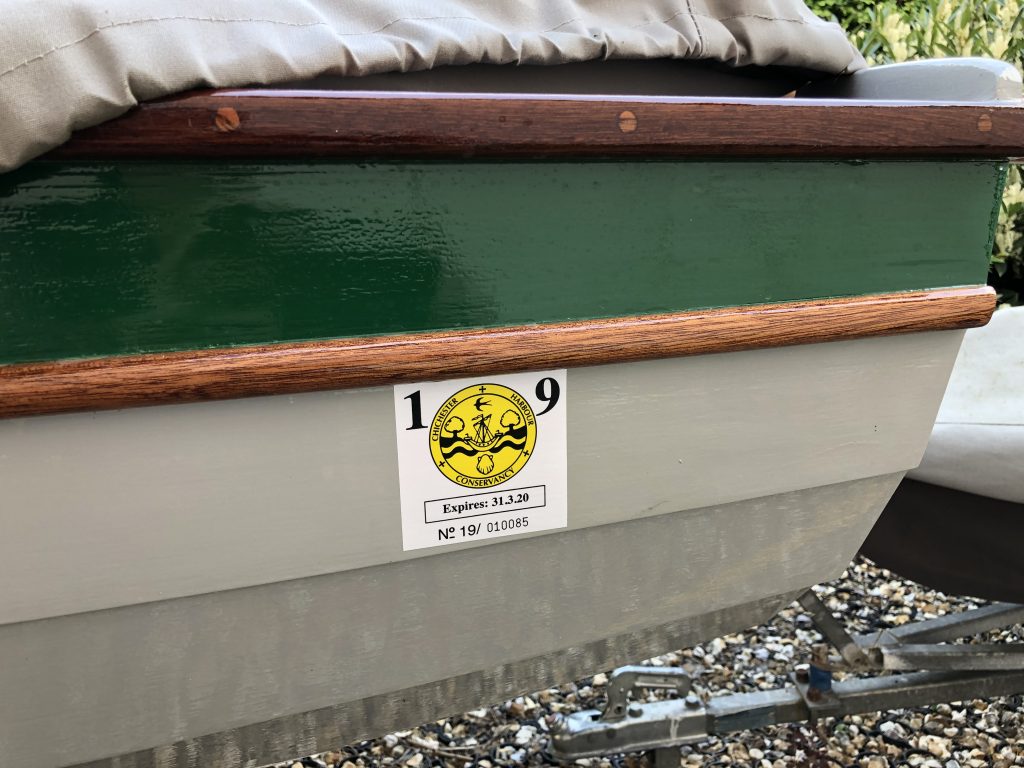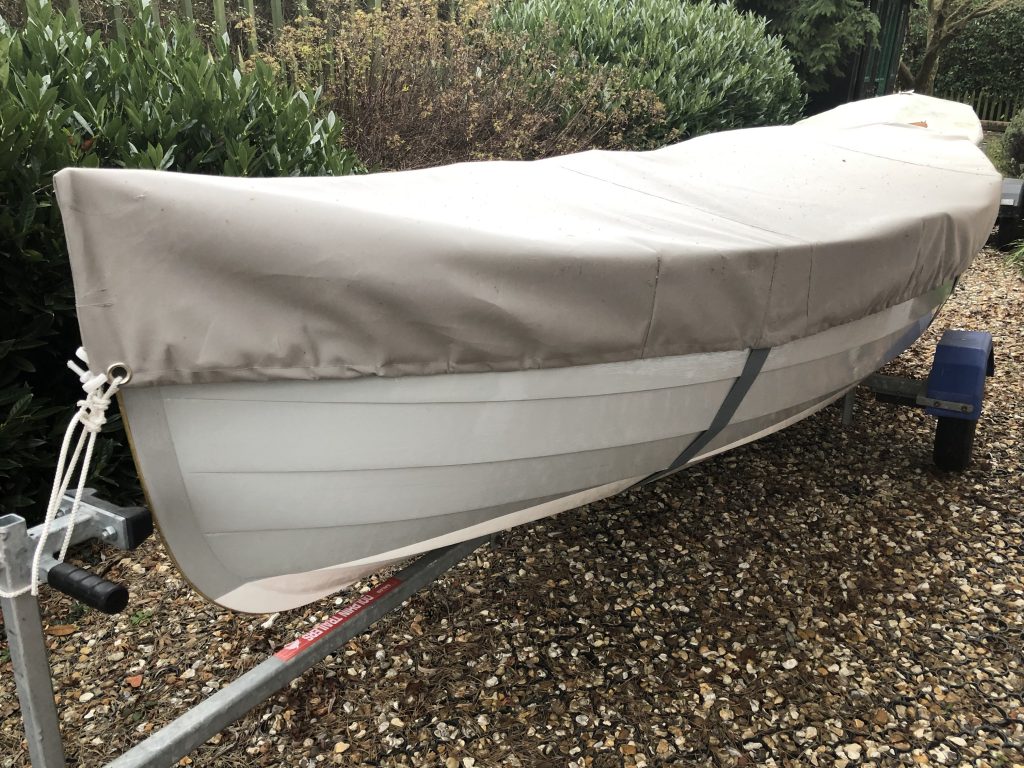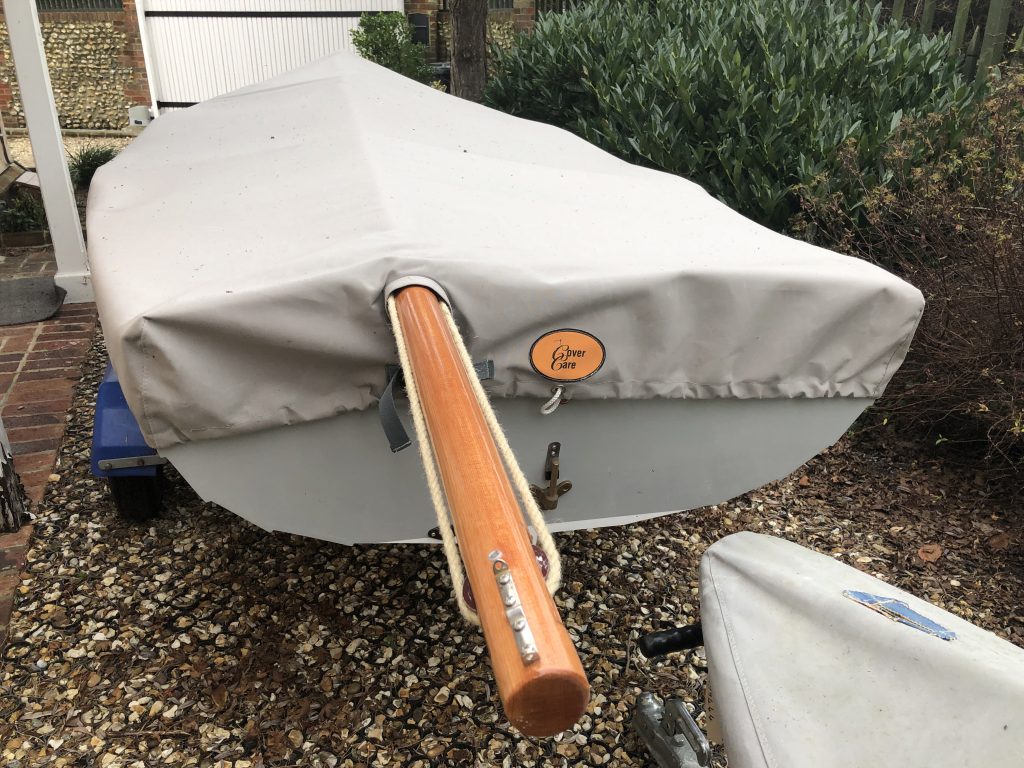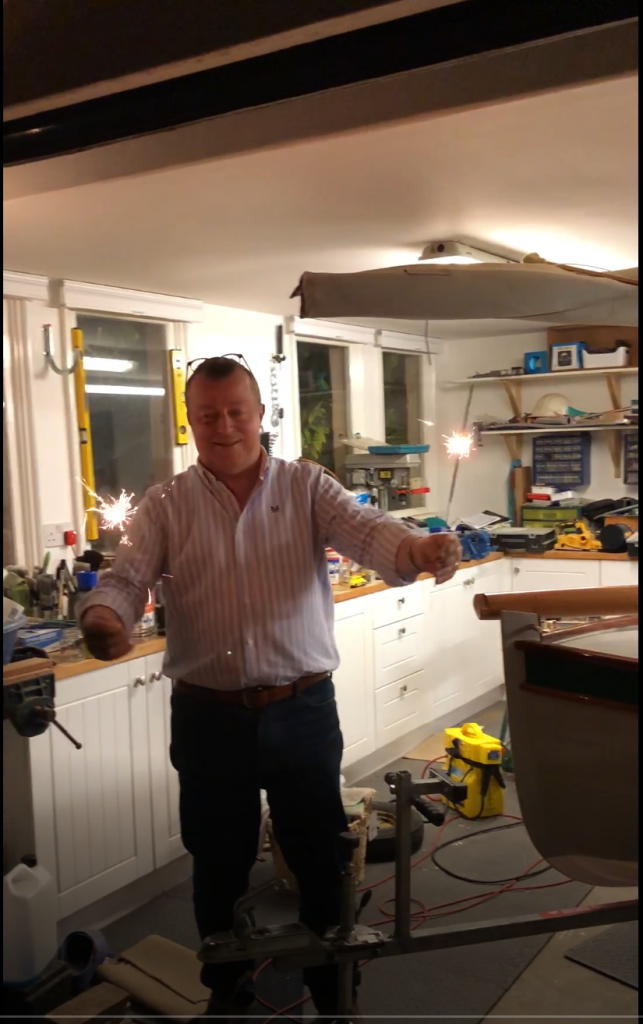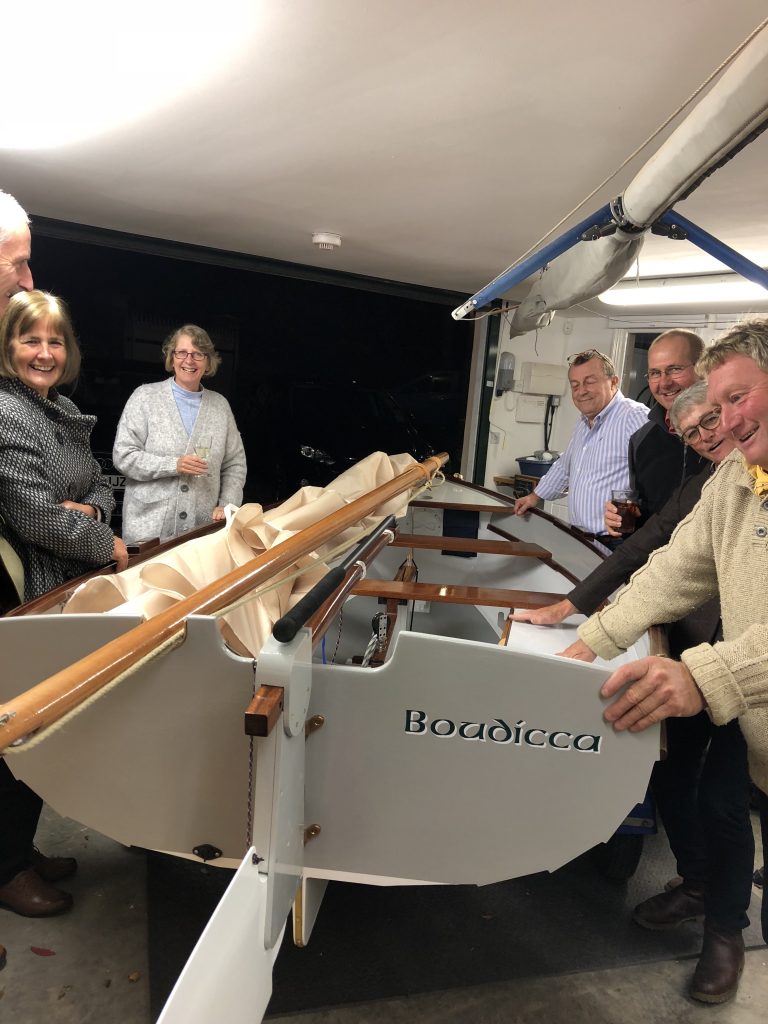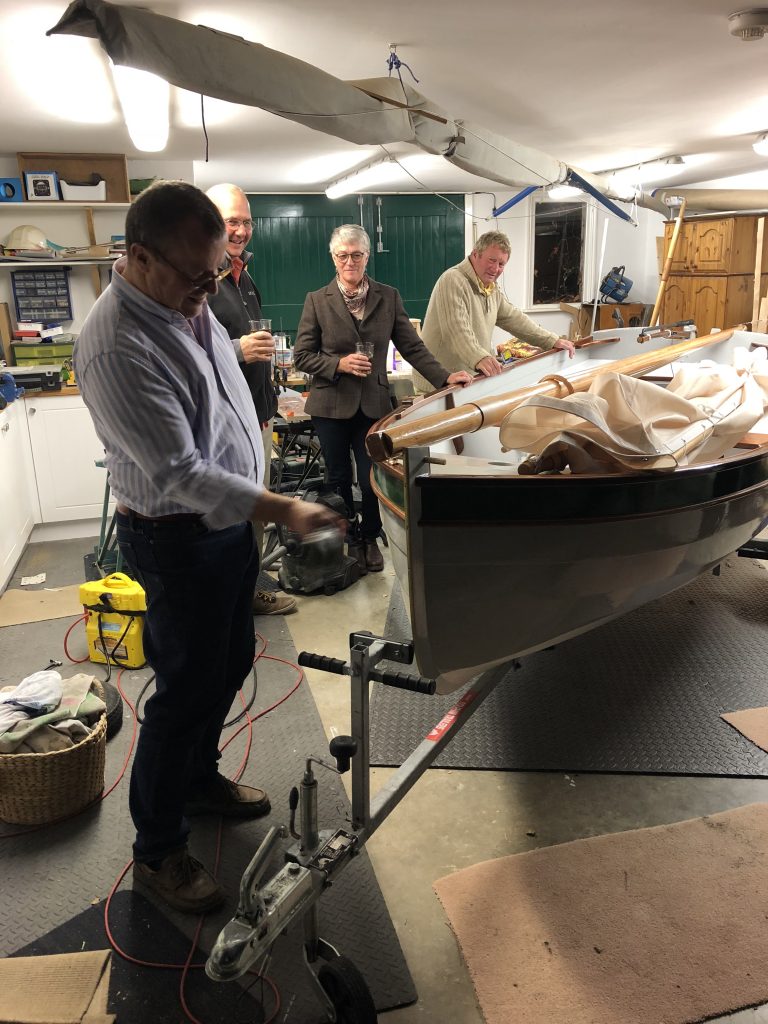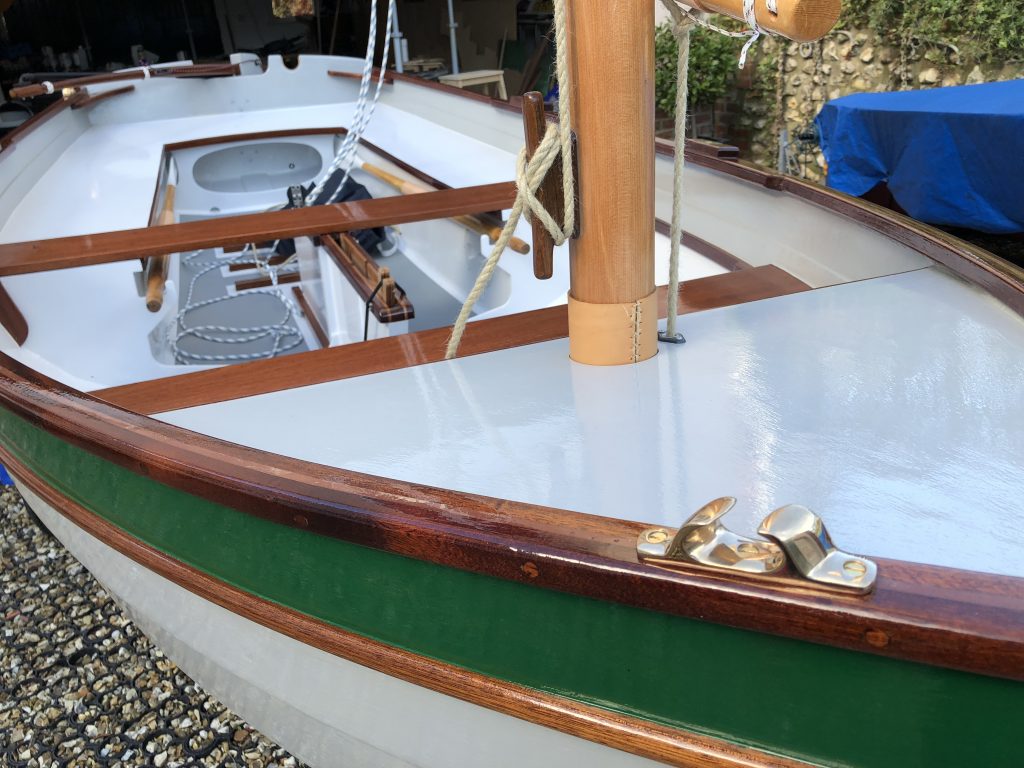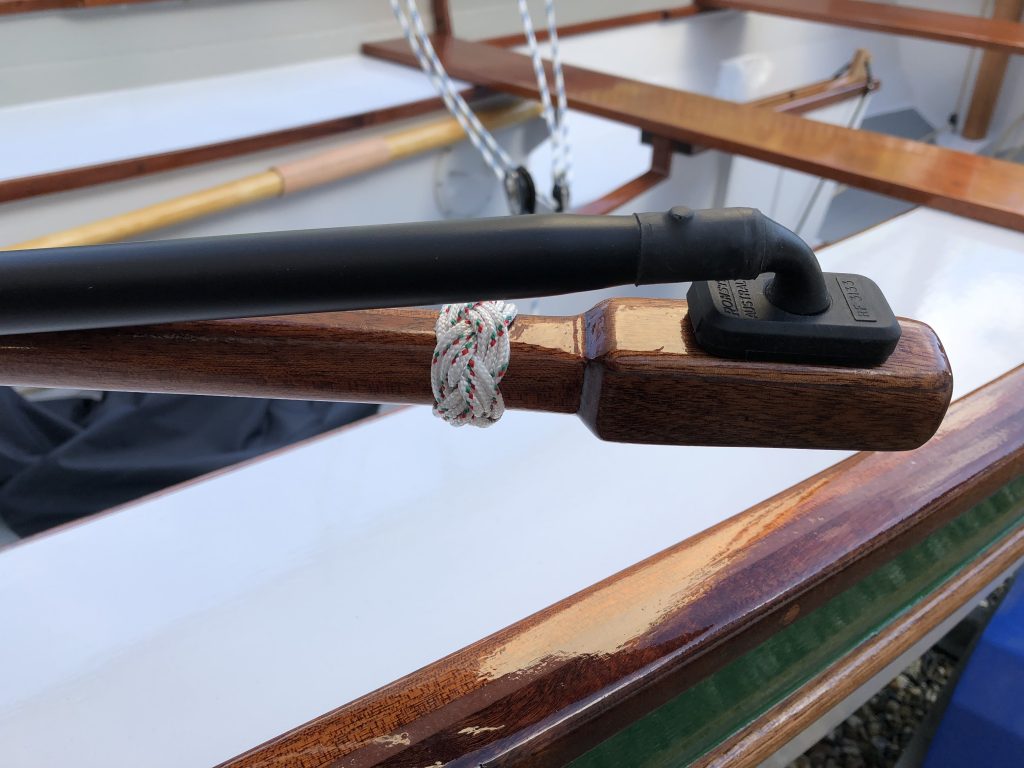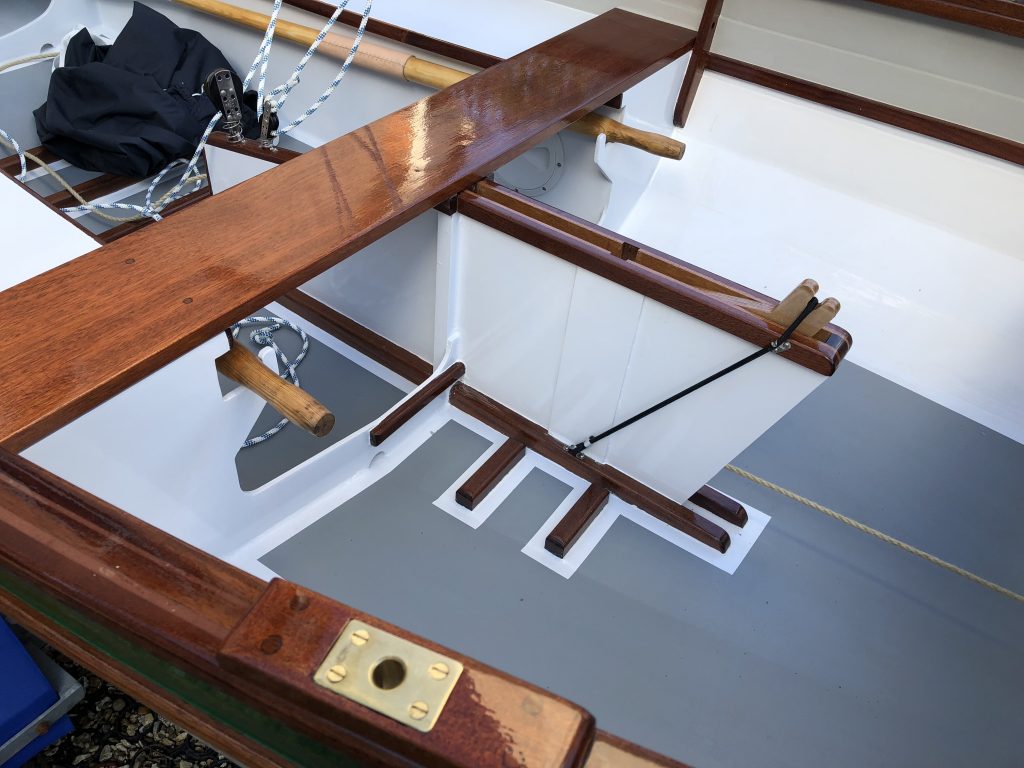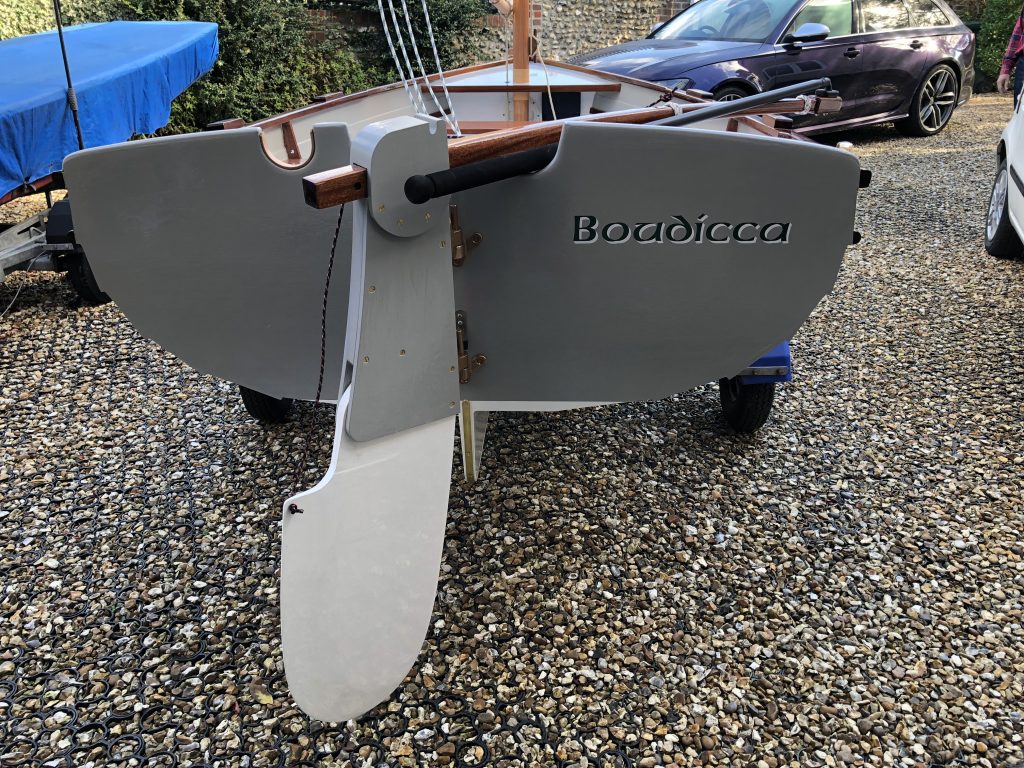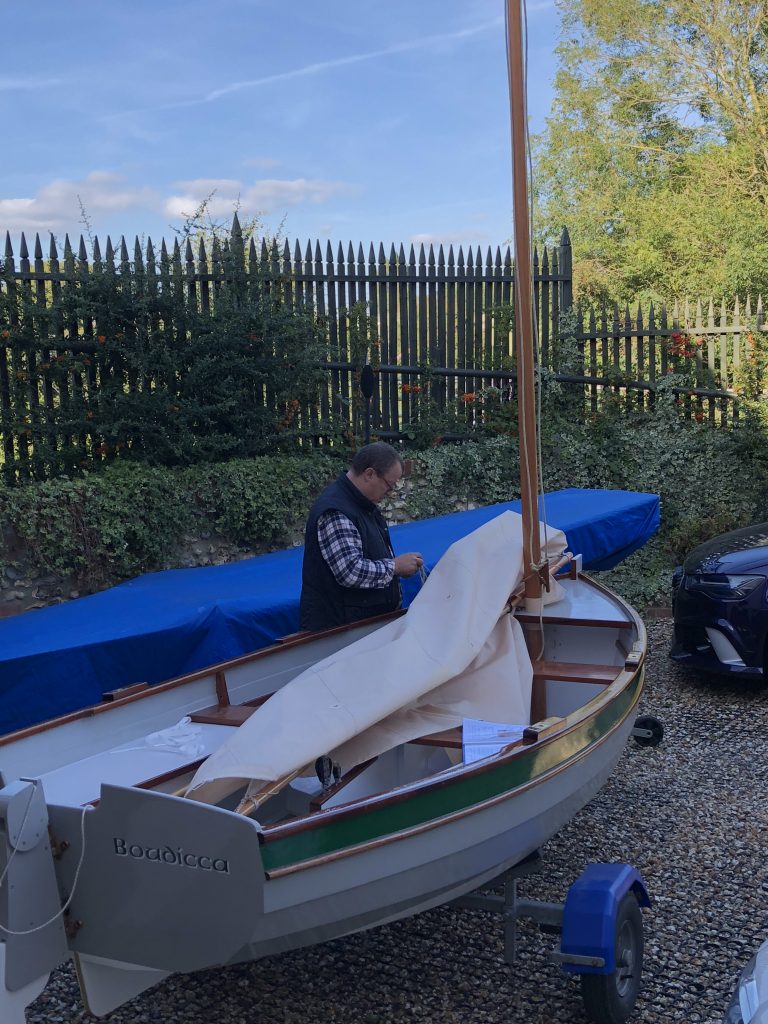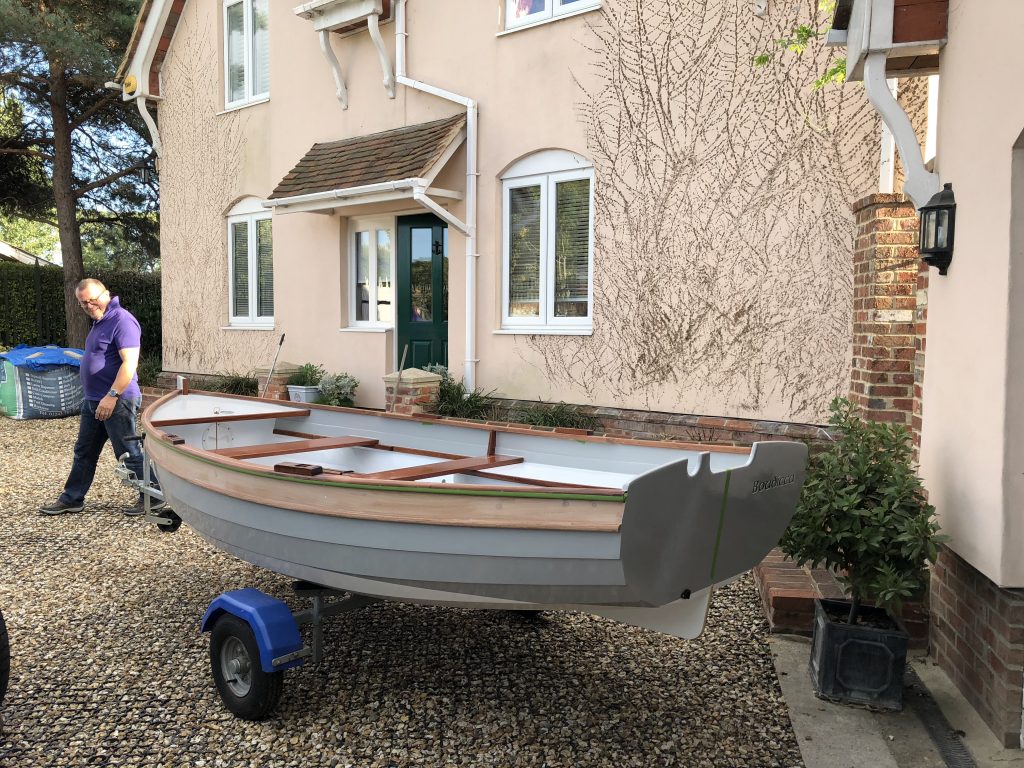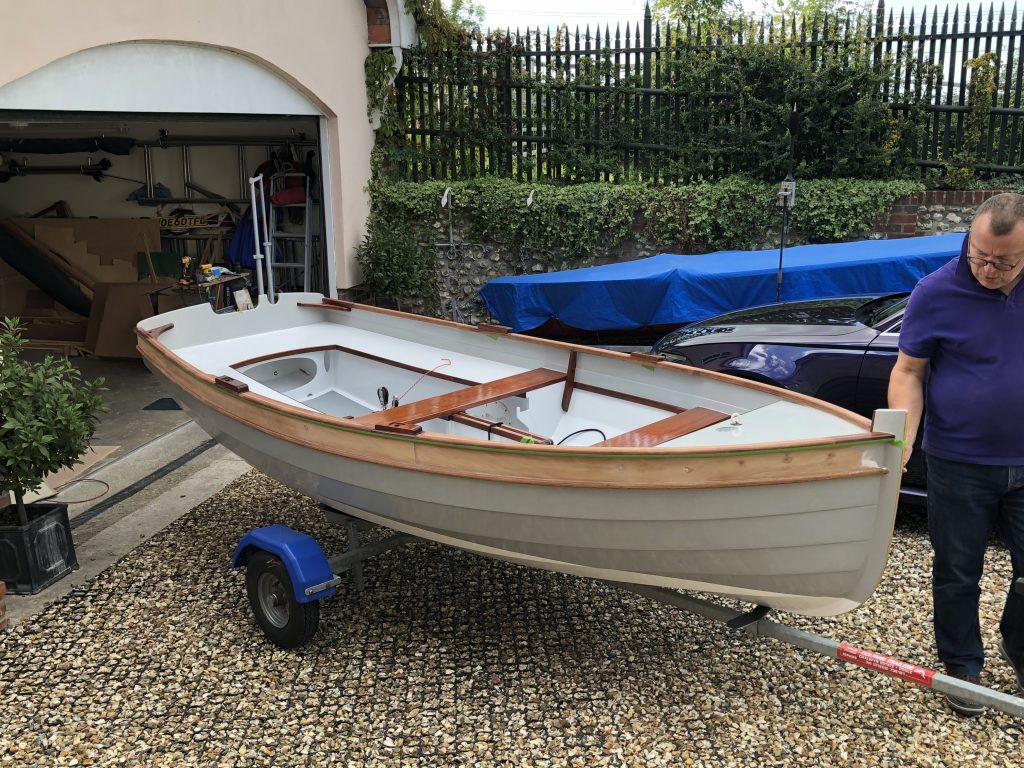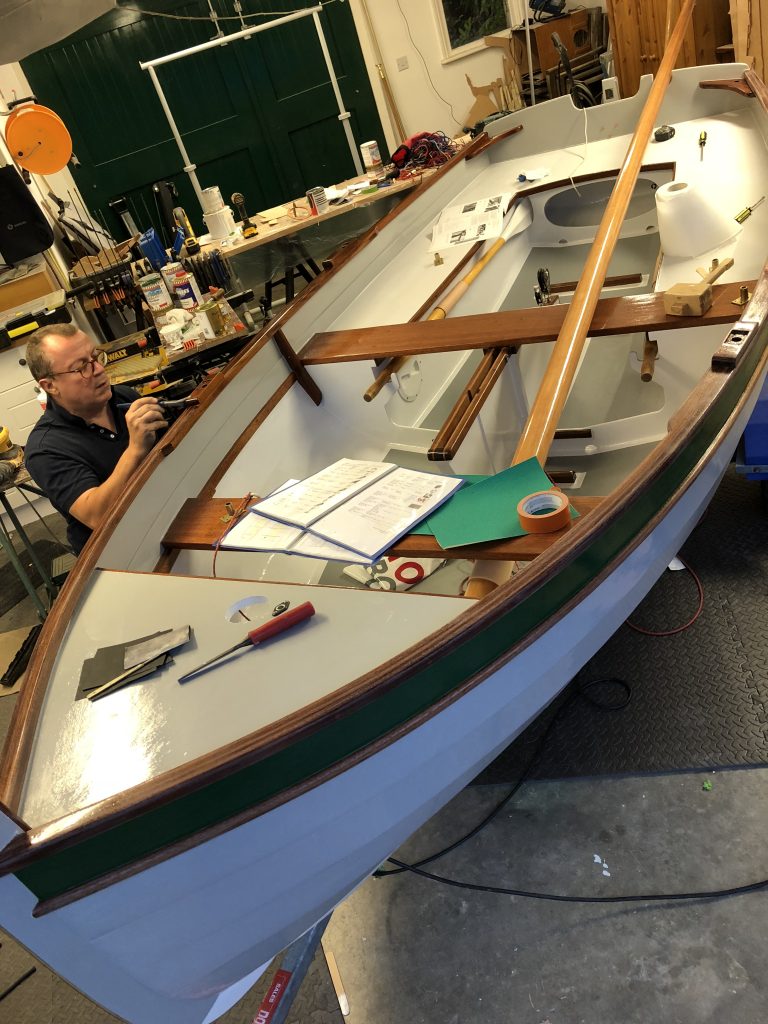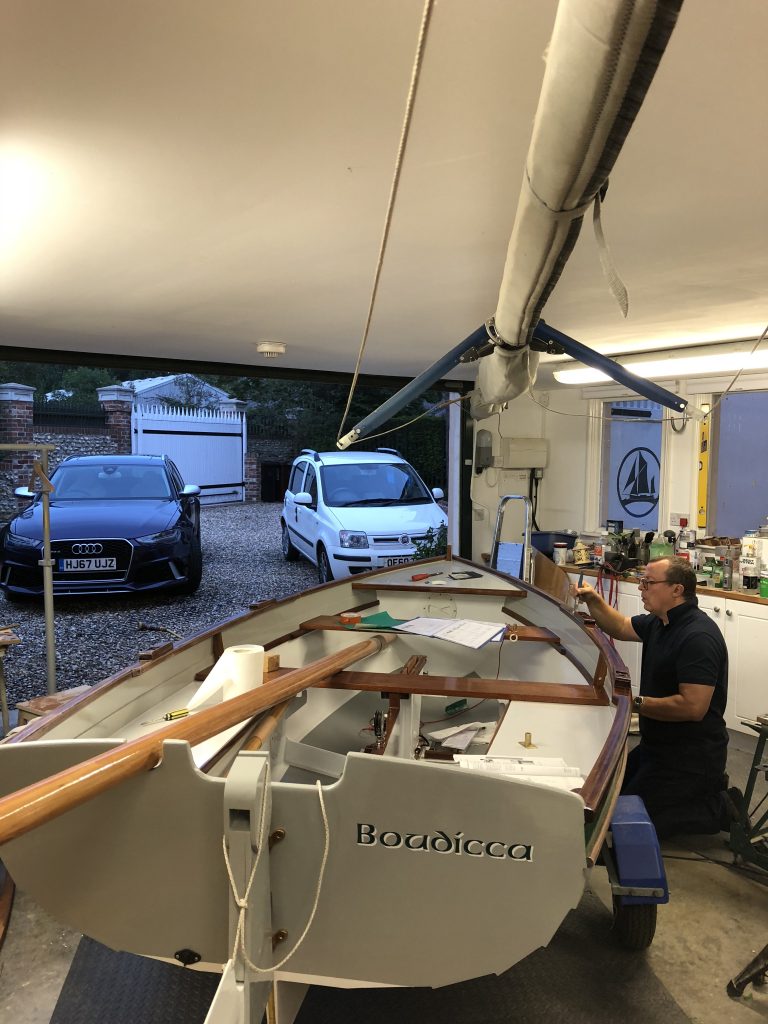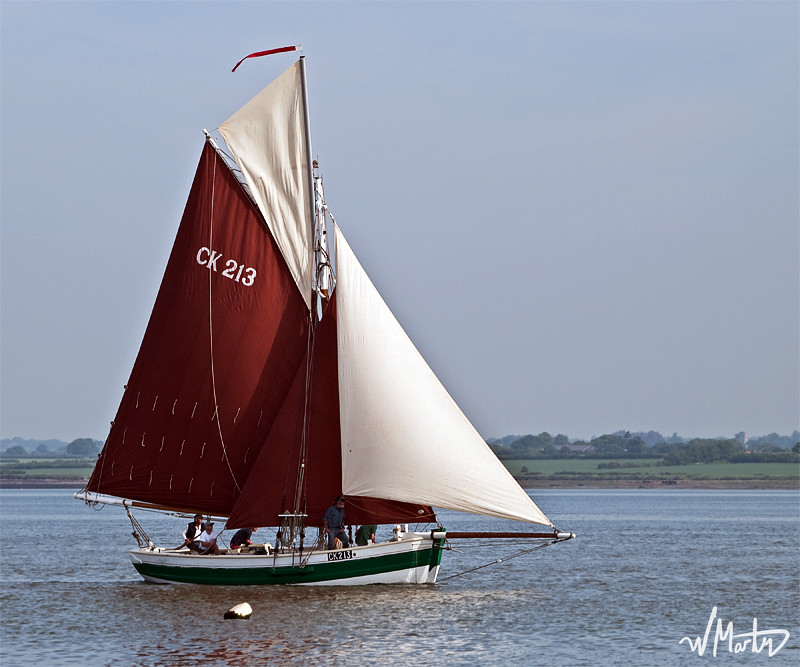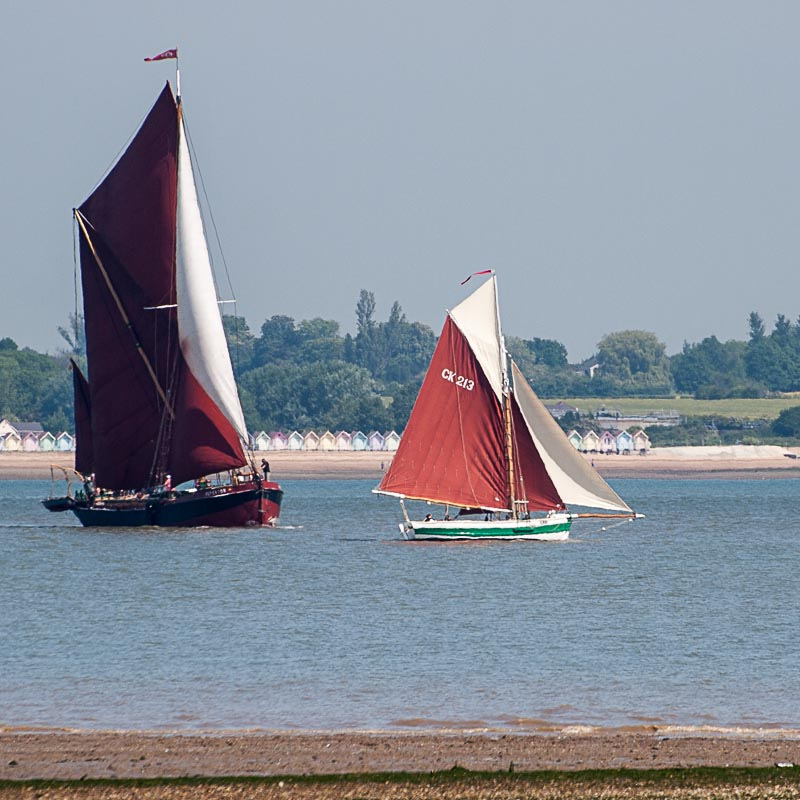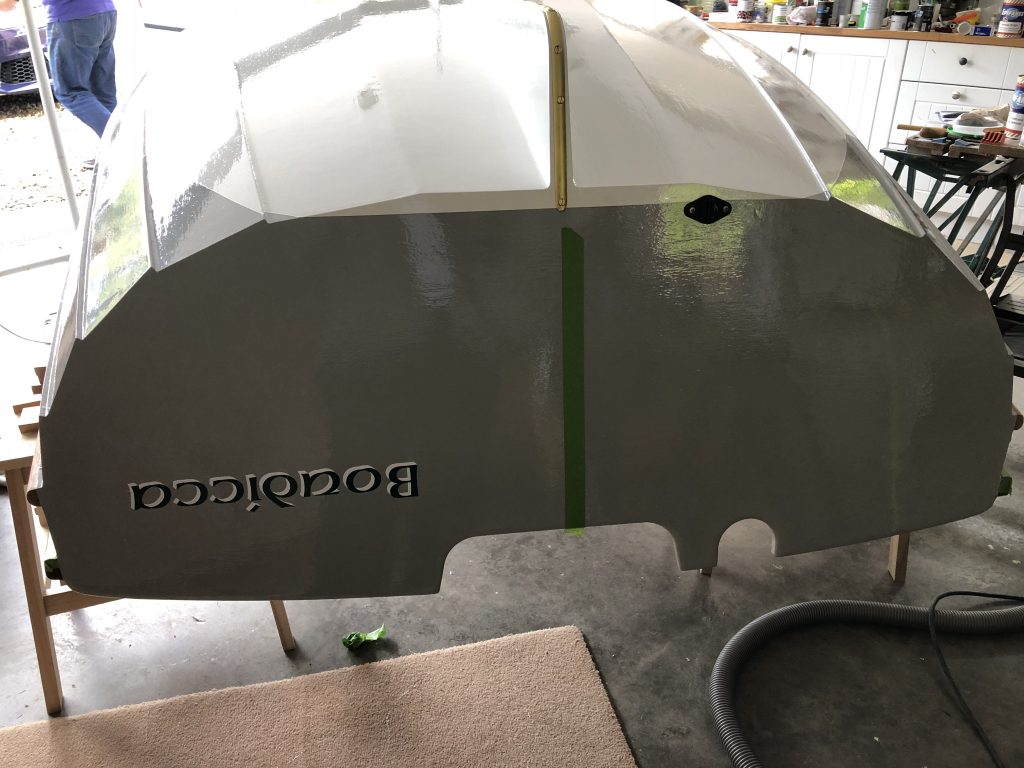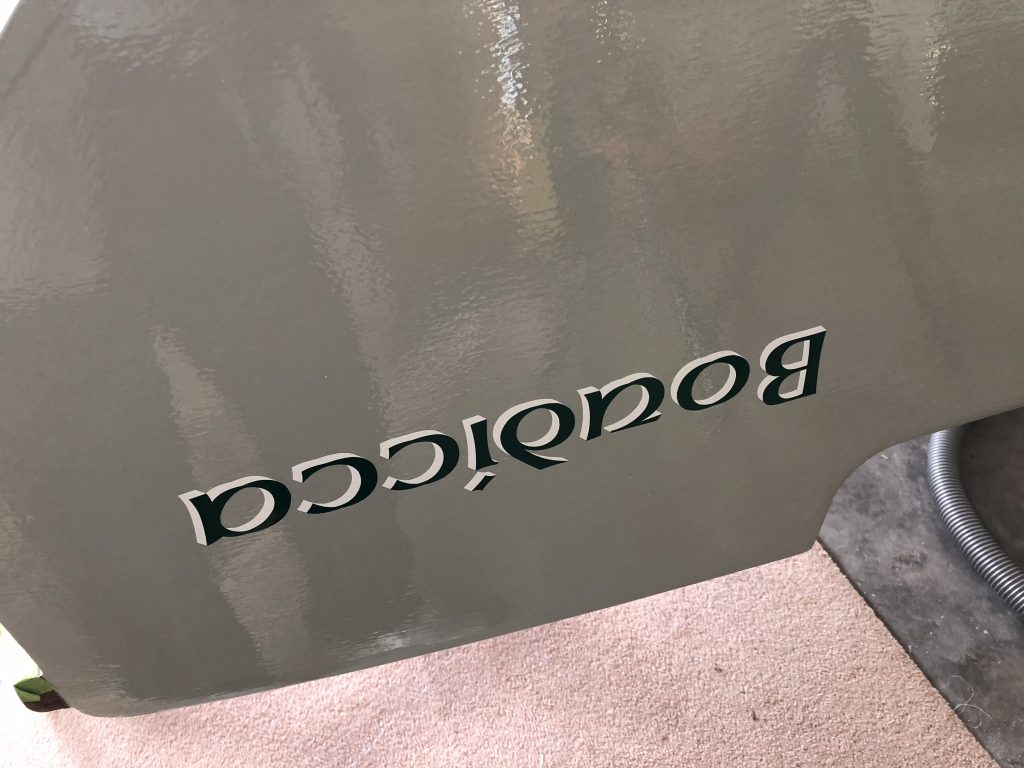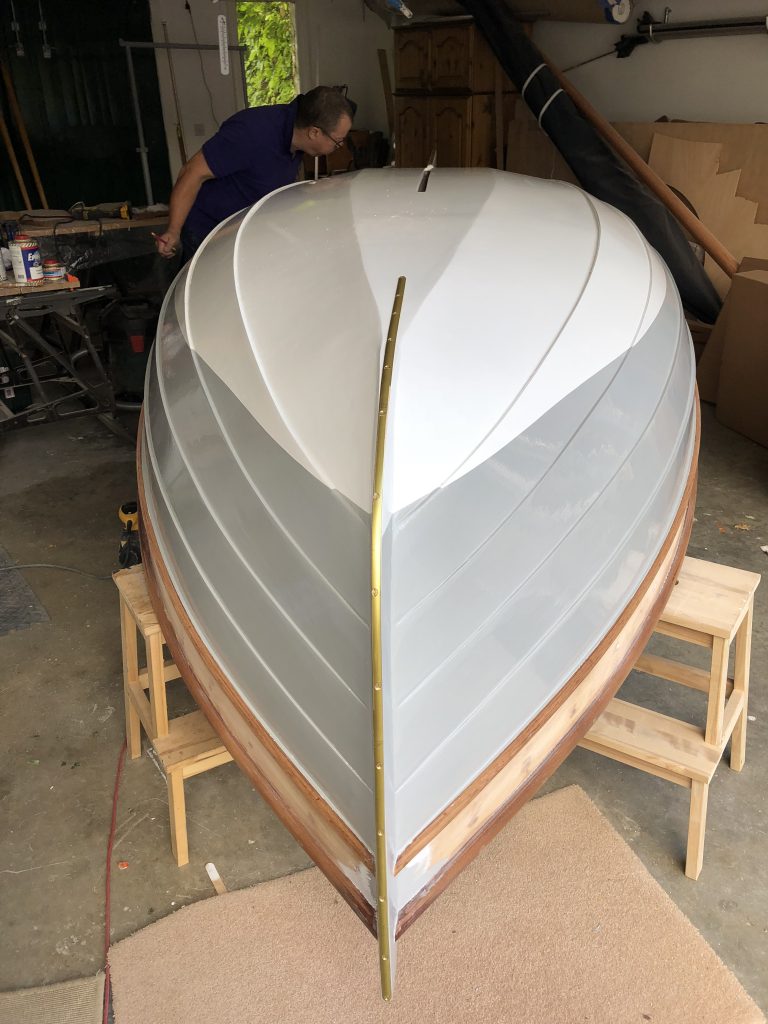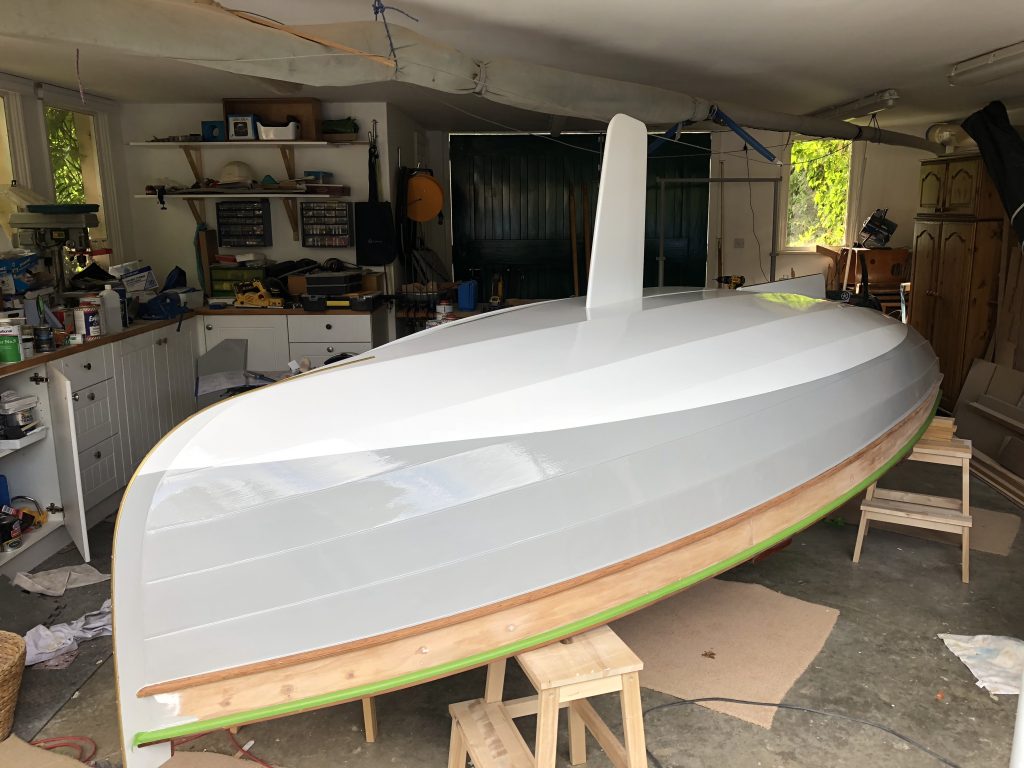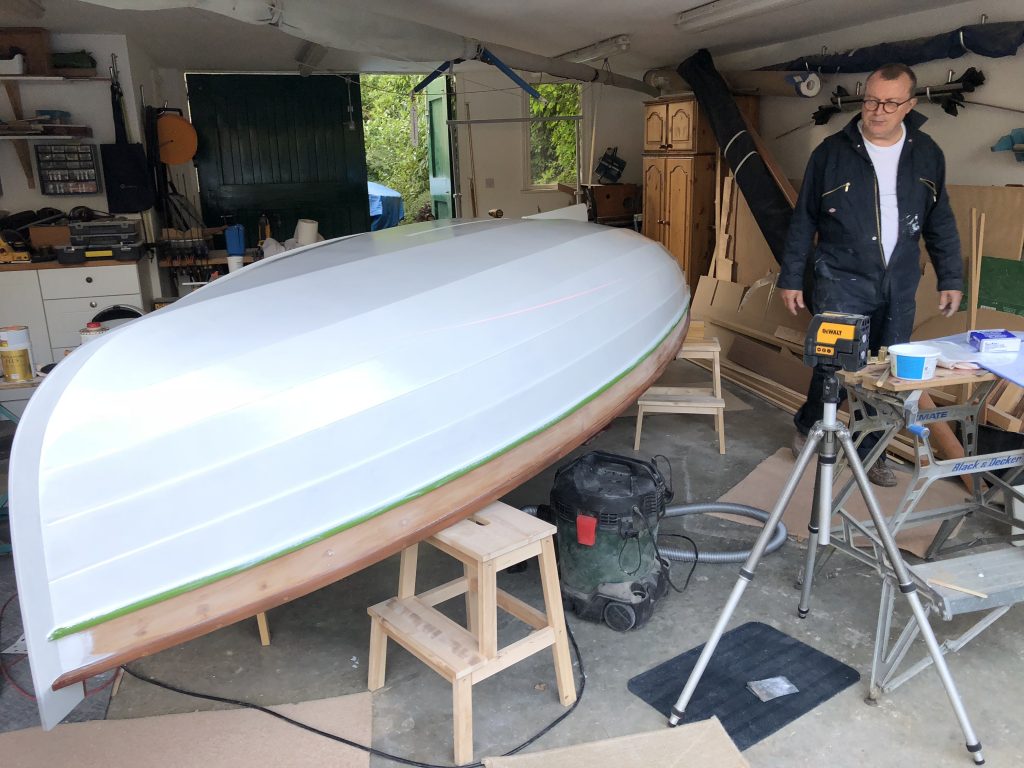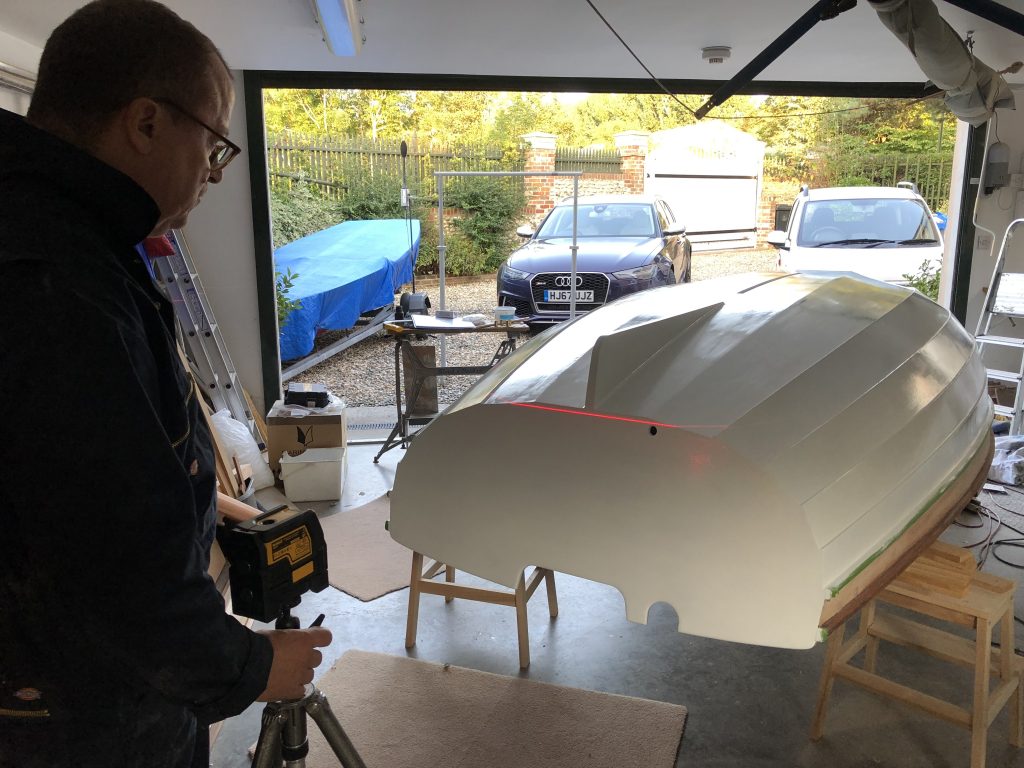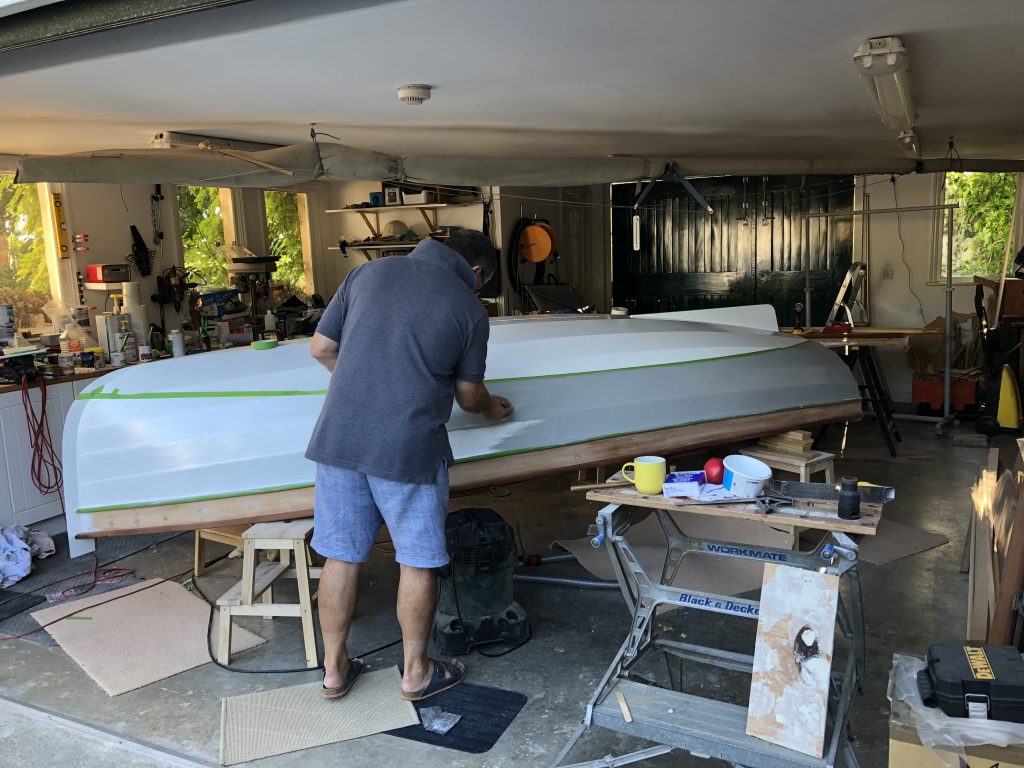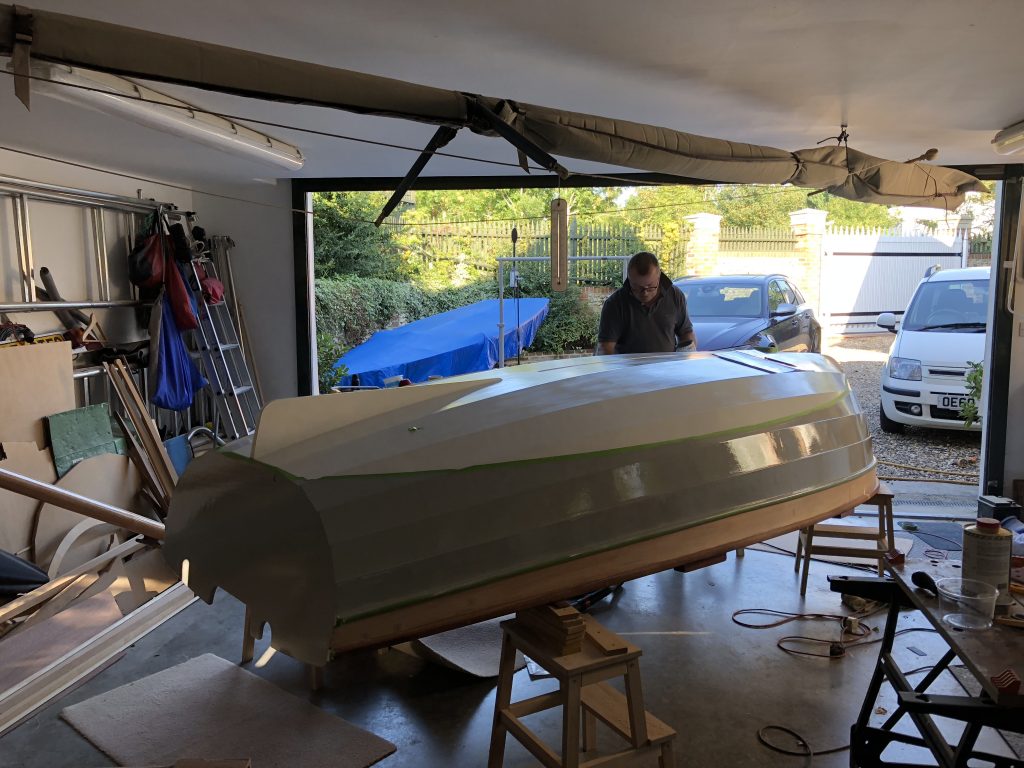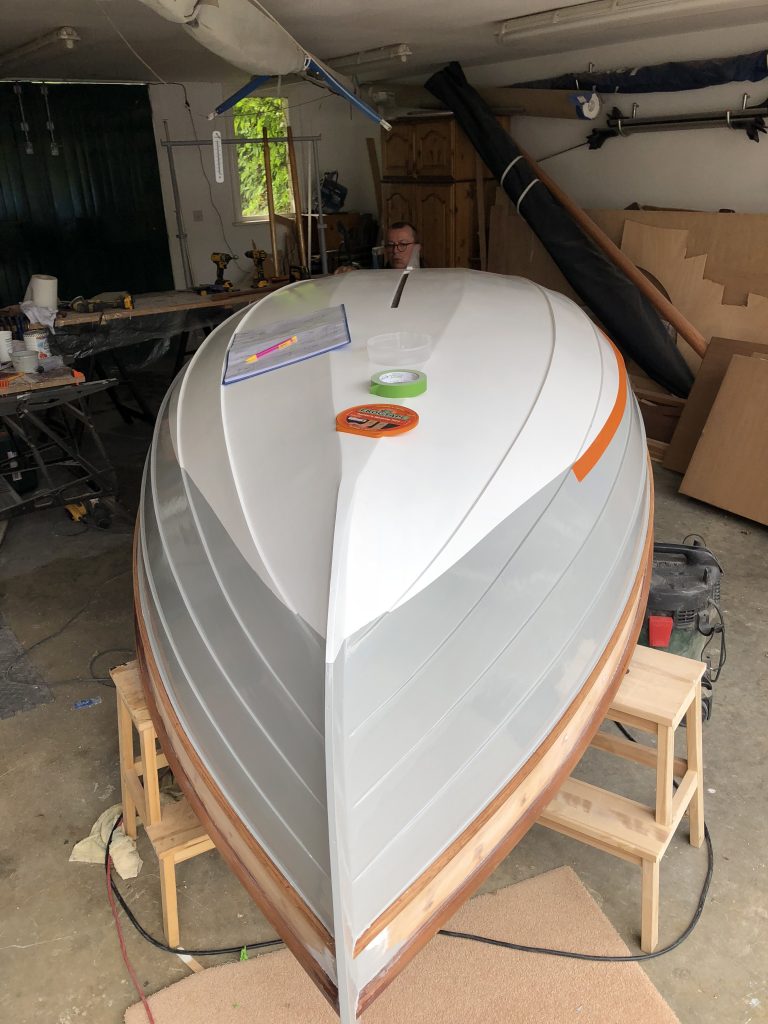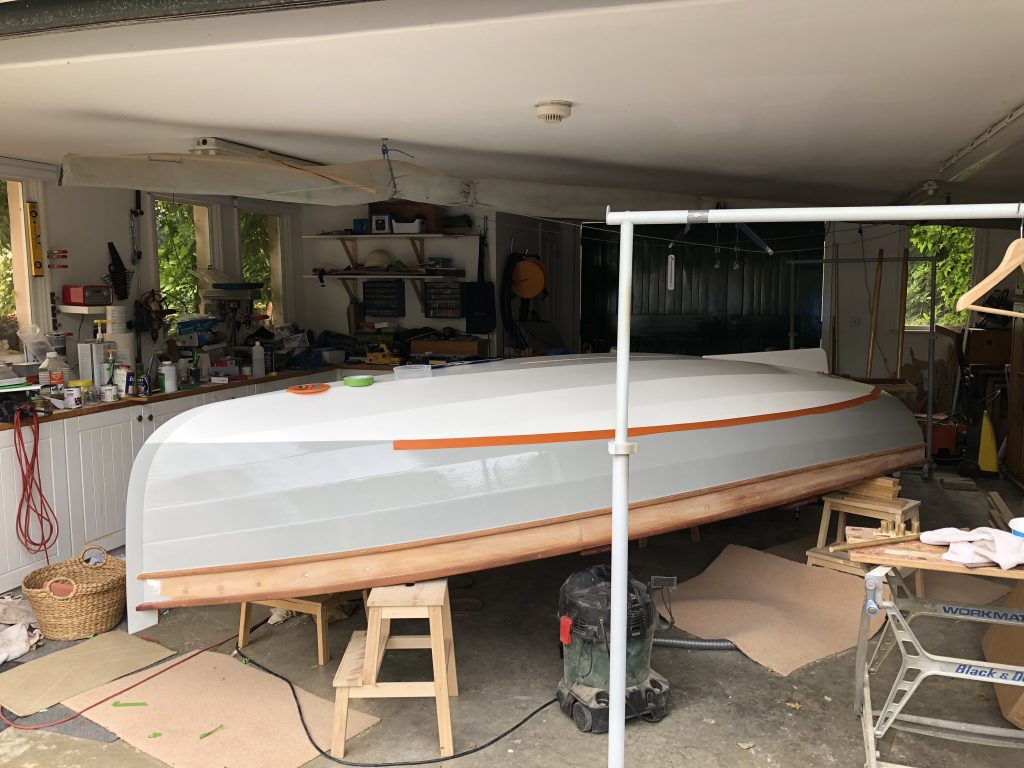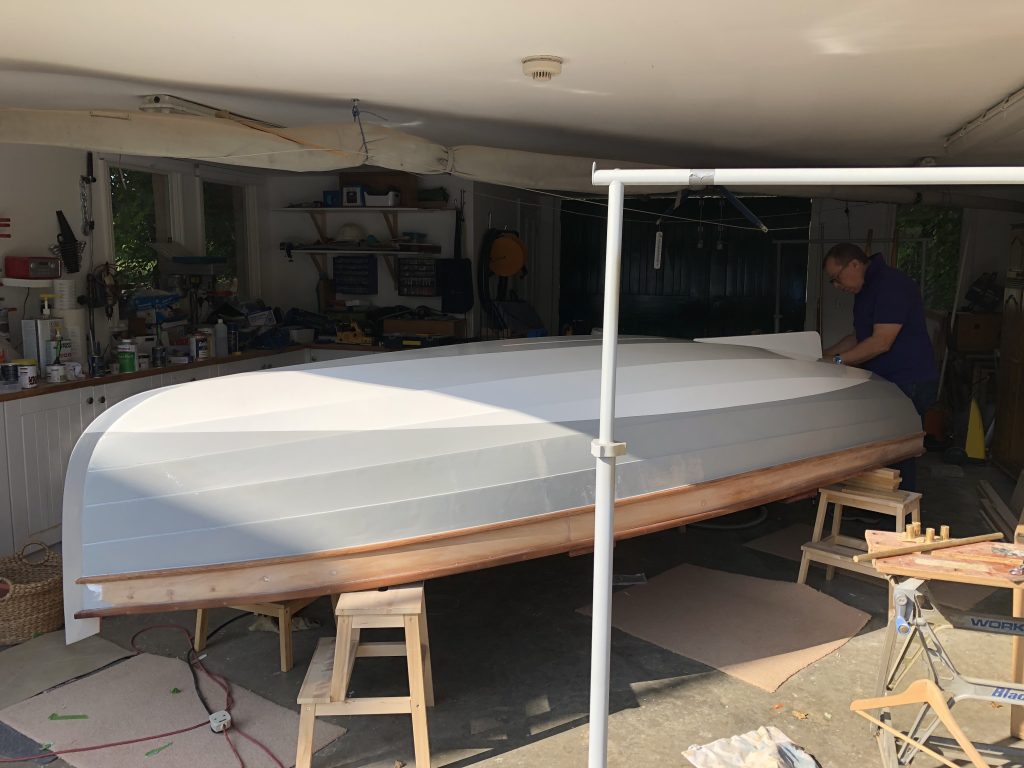This wasn’t supposed to happen but Signora was away in Italy, having her hair done, and I was at a loose end. So I thought “why am I here, I should be out sailing?” so I suddenly got the urge to go down to Dell Quay. The weather was perfect and the tide also, so there was no excuse.
It was a Monday, so parking at Dell Quay was easy, so taking the boat down with the Panda was a doddle. Before long, we were afloat! I’m afraid there are no launching photos, as my friendly photographer was away, but I managed to grab a photo on the iPhone as we approached Bosham – yes, a very brave first voyage, but it was no trouble at all.
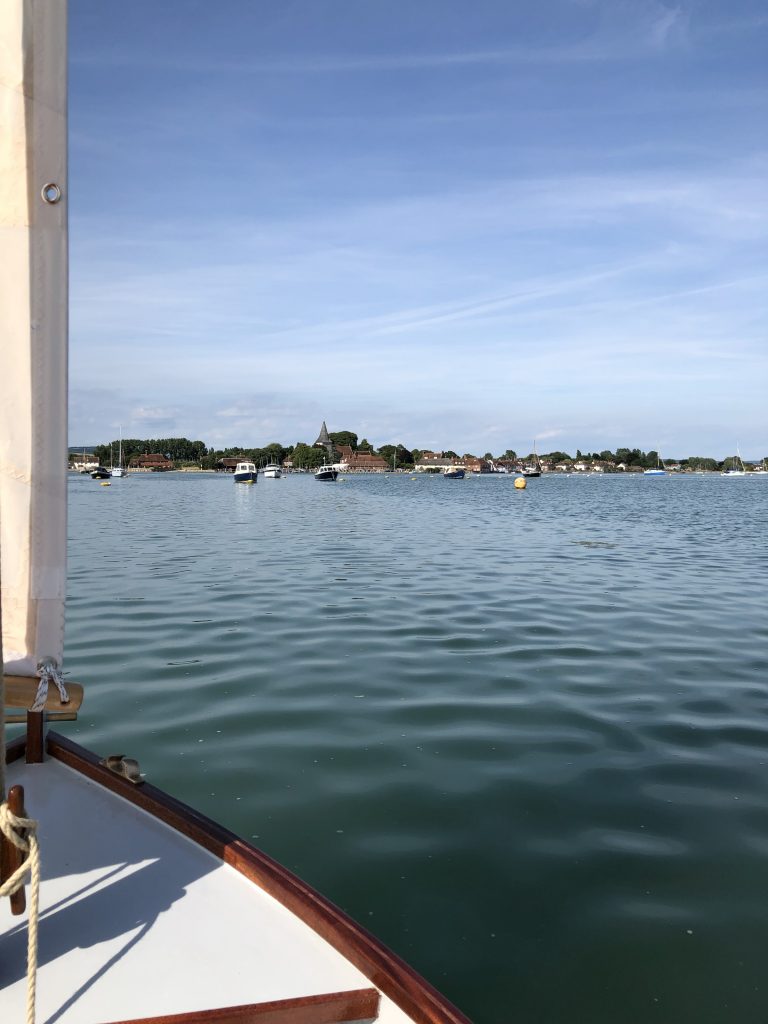
Boudicca acquitted herself very well. A good turn of speed and very well balanced on the helm both upwind and down. I learnt how to take the tacks slowly, so the centreboard didn’t stall, and as long as you keep the boat moving, the centreboard bites fairly quickly.
Rather amusingly, on the way back, I almost ran over a swimmer off Cobnor point, and he asked me what the boat was. I shouted “a Morbic 12!” and he immediately said “ah yes, a Vivier design”. I wonder if I will track down the other Morbic 12 on the harbour, which Adrian Donovan had already told me about.
A lovely day on the water.

